The prominence of bhakthi cult and its influence on the arts forms is immense. The Geetha govindam by Jayadeva the Sanskrit poet from Orissa is used to be sung in front of sanctum sanctorum of the Kerala temples and Mukundamala by Kulasekara alwar, one of the earliest Sanskrit bhakti Kavya that came from Kerala are all product of the bhakthi cult.
Manaveda, a 17th century Zamorin prince captivated by the lyrics and music of Geetha govindam composed a natya prabhanda called Krishnagiti which is based on 10th cantos of bhagavatam describing the life history of lord Krishna.
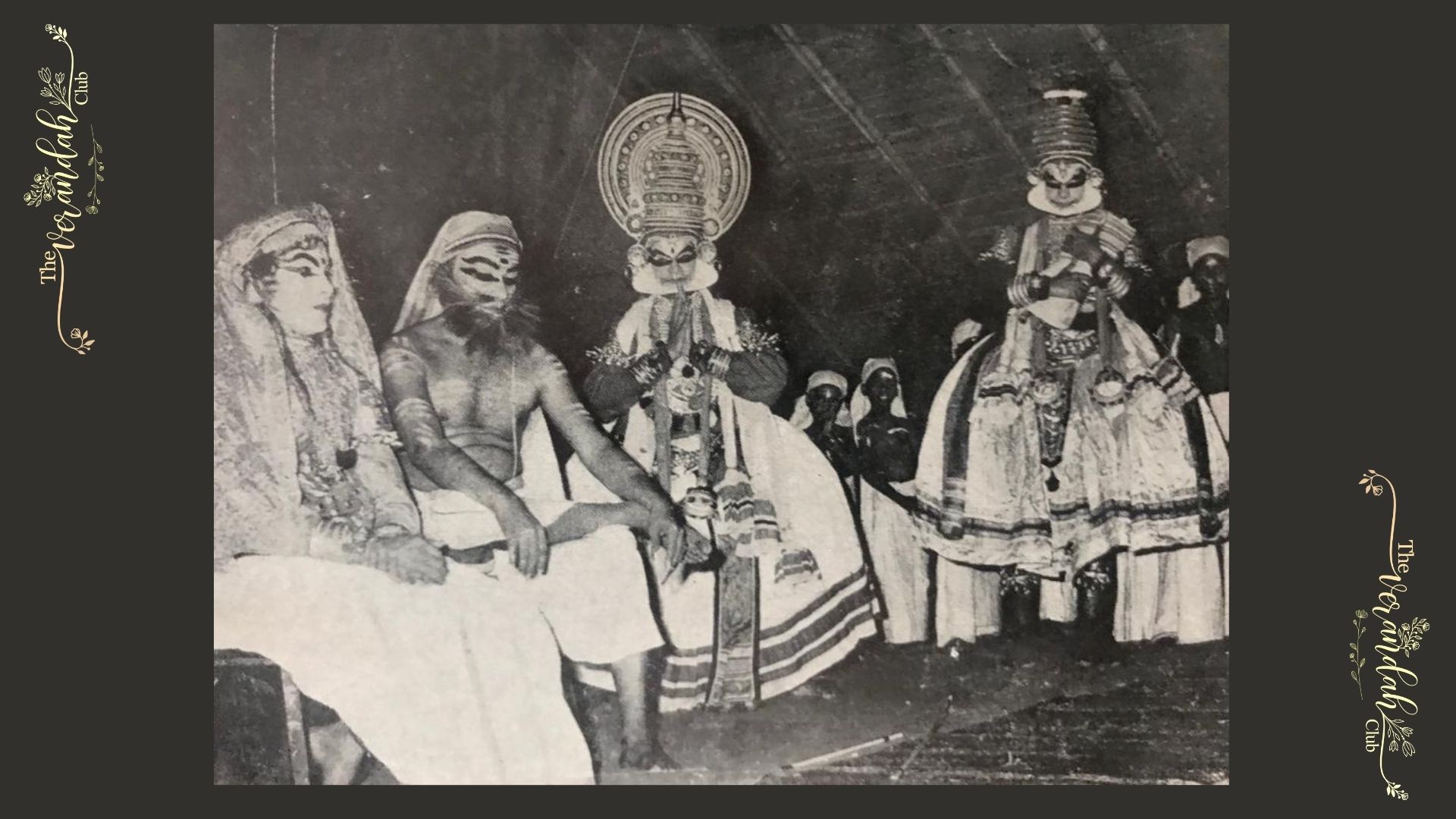
Whoever visits Guruvayur might have seen this dance drama known as Krishnanattam staged inside temple premises after the closure of Sanctum around 10 to 10:30 PM. Literary text of Krishnanattam is Krishnagiti. Manaveda created krishnagiti as drishya kavya with slokas and padams to be presented visually. It is practiced as ritual art within temple precincts as a votive offering to Lord. Manaveda developed this by combining classical and folk dance elements from then prevailing Kudiyattam the Sanskrit theatre and folk dances like Thiyattu and Sankhyakali. Dance gestures, hand poses were borrowed from these art forms, but he maintained many aspects unique to Krishnanattam. This art form is a connecting link between ancient Sanskrit theatre Kudiyattam and later developed Kathakali.
Krishnagiti is splitted as 8 parts and enacted for 9 days continuously. The eight plays are Avataram, Kaliyamardanam, Rasakrida, Kamsavadham, Swayamvaram, Banayuddham, Vividavadham and Swargarohanam. On the ninth day again, first part Avatharam is enacted, so it does not end on a tragic note and rebirth succeeds death. The language is Sanskrit, and this is a predecessor of Ramanattam, the story of Rama. There is a legend associated with creation of Ramanattam, when Zamorin refused to send his Krishnanattam troupe to Kottarakkara. The Tampuran there created a new dance form based on the story of Rama, which was later developed as Kathakali.
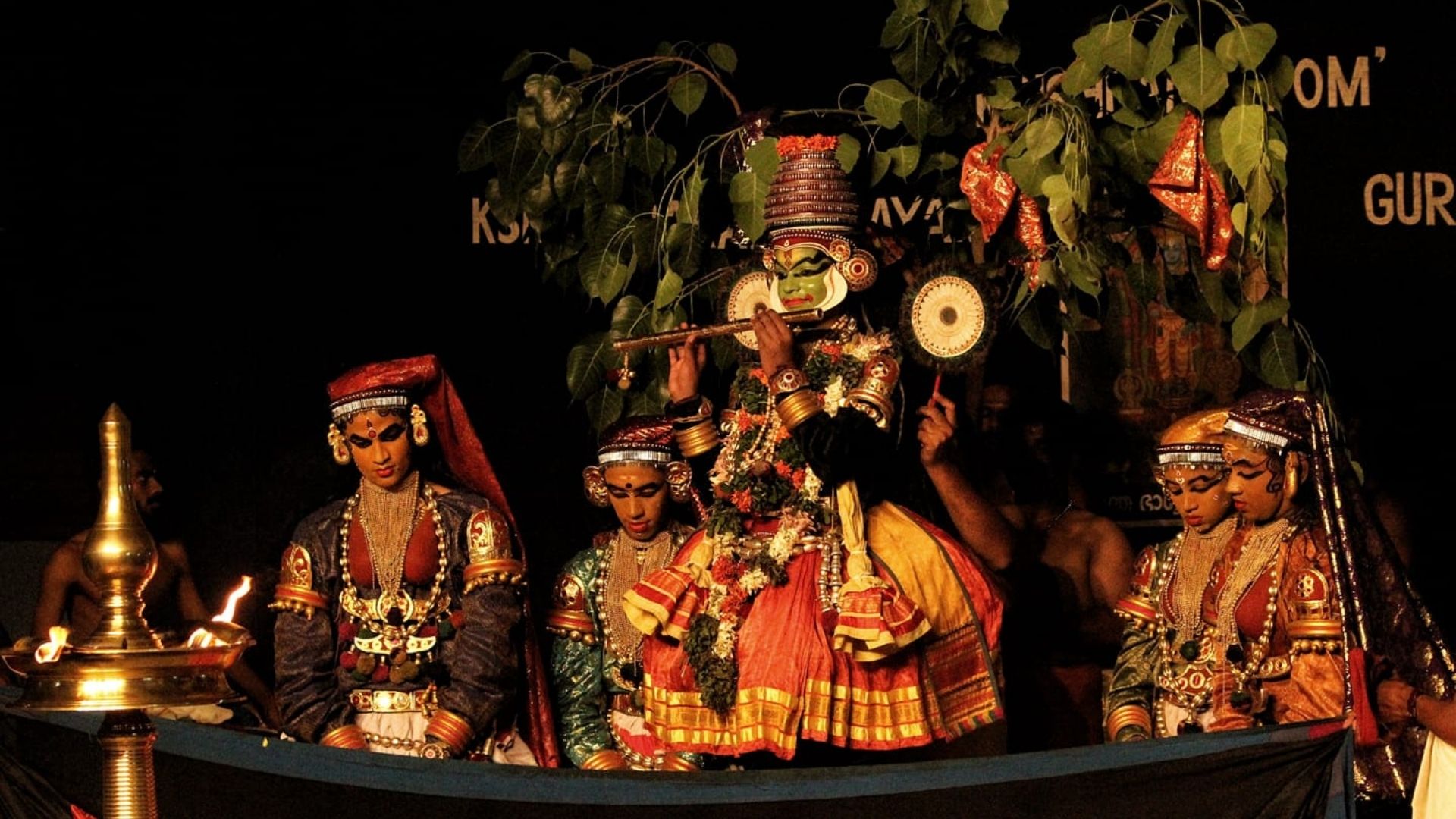
Krishnanattam does not rely on highly stylised acting instead, it is a ritual prayer with emphasis on dance, music and percussion. The Sanskrit sloka's and pada's of Krishnanattam are sung in Sopana style by two bhagavatars standing behind the actors. Later, this technique was borrowed by Kathakali. The dance sequence called "Mulapoo choodal" which combines folk elements with lasya is featured in Avatharam and Rasakreeda plays. Thandava in Kamsavada and Bhanayuddham plays and bhibatsa one among navarasa is expressed in dance by the character Ghantakarna.
Makeup was again borrowed from Kudiyattam and folk arts. Masks are used for few characters. Chuttis are made of rice paste only and used by few female characters too, which is not seen in Kathakali or Kudiyattam.
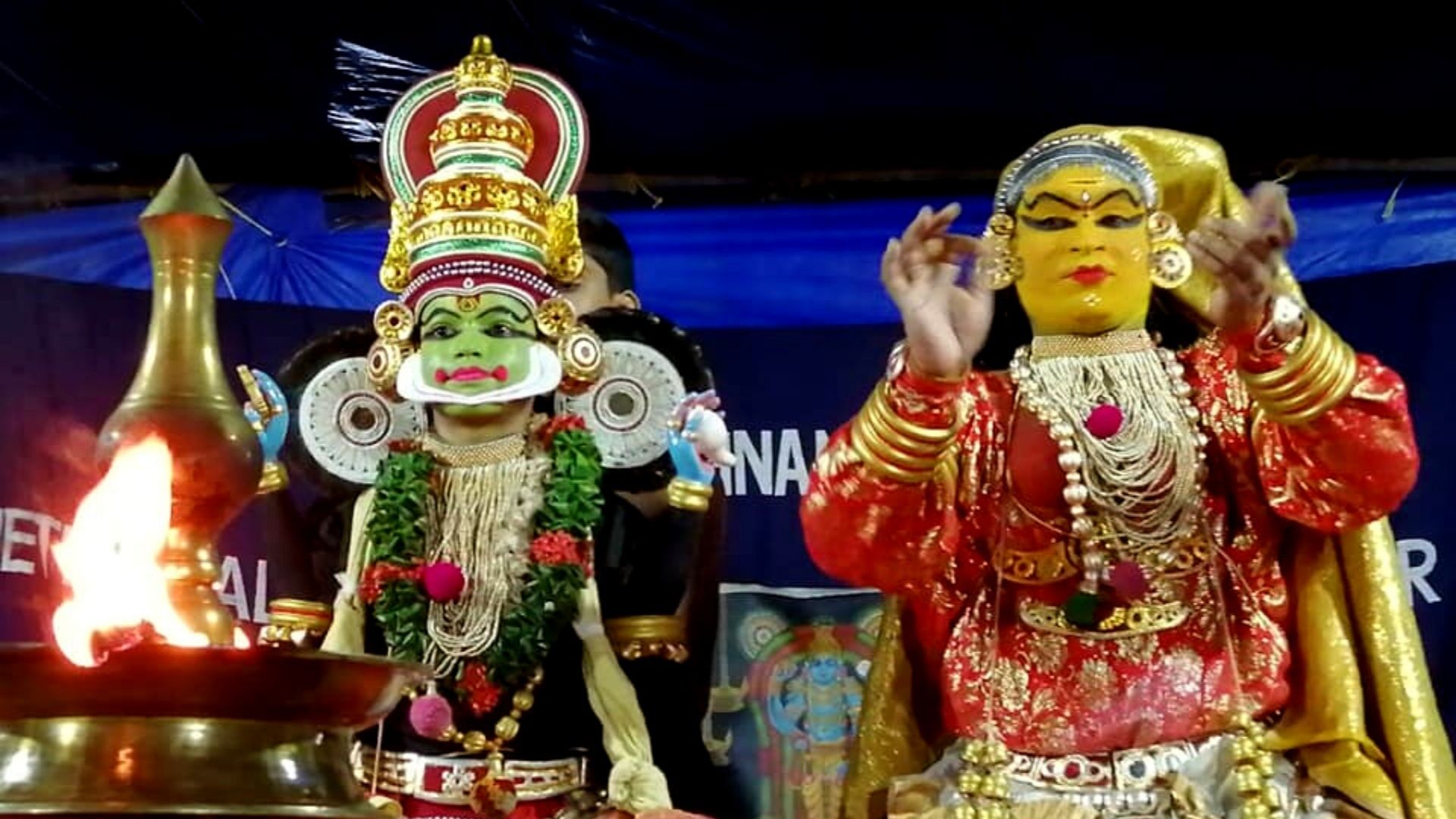
The Krishnanattam troupe was trained and maintained by Zamorin from the time of its initation and the troupe performed in temples and aristocratic homes inside Zamorin's Territory. In the 1950s, the troupe after transferring from Zamorin control to temple paved way too many bhakthas witnessing the plays. The immense faith of them in lord and thier belief watching this will fetch lords blessings made this art to be performed as a votive offering where childless couples offer Avatharam to be staged if blessed by child. Swayamvaram offered for a delayed wedding. Success in any field by offering Banaydham. Kamsavada for destruction of the enemy. Vividavadham for removal of poverty. Swargarohanam is played along with Avatharam. Lot of regularization happened like fixing a salary for troupe members and performance within and outside India, Changes in customs etc after Krishnanattam came under an institution called "Kalanilayam" which is under Guruvayur Devasom board.
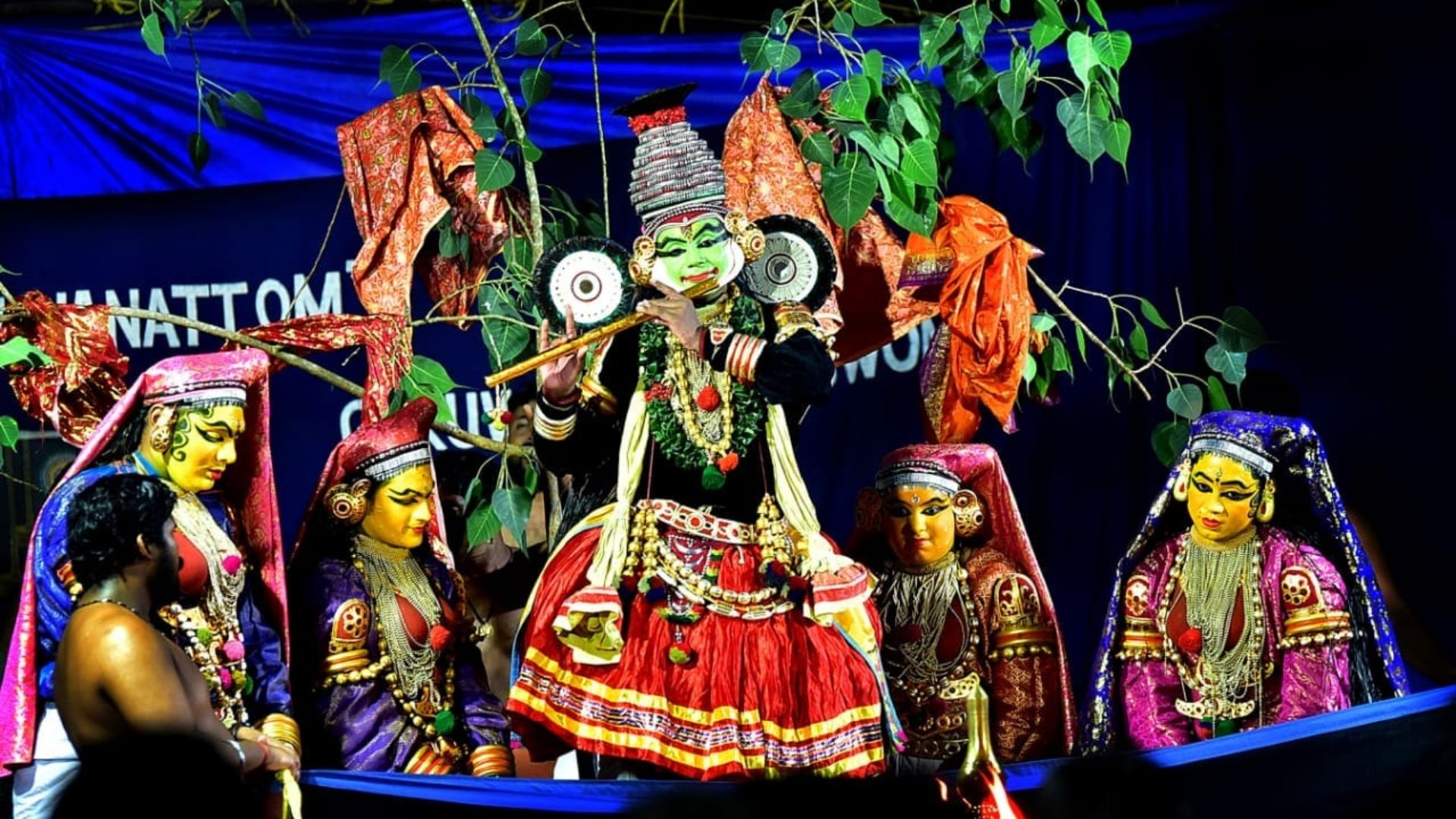
After closing of Srikovil the performance starts by liting a huge lamp by a Brahmin. Kelikottu and Todayam is performed before actual play. Purappad differs from play to play. Huge oil lamp is placed and eight measures of oil are used. Behind this is the performance space where actors perform. Behind the actors are two singers and instrumentalists. Sudha madalam, Topi madalam and Edakka are used as accompaniment. Singer's carry Chengala and Elatalam. Actors enact based on tunes and talas, not on the actual text. Slokas and Padams from Krishnagiti are sung for each play. However, not all Padam's are sung from the text and many are ignored traditionally. Play starts with Kelikayyu and a Vanda sloka and ends with Mangala sloka and instrumental music.
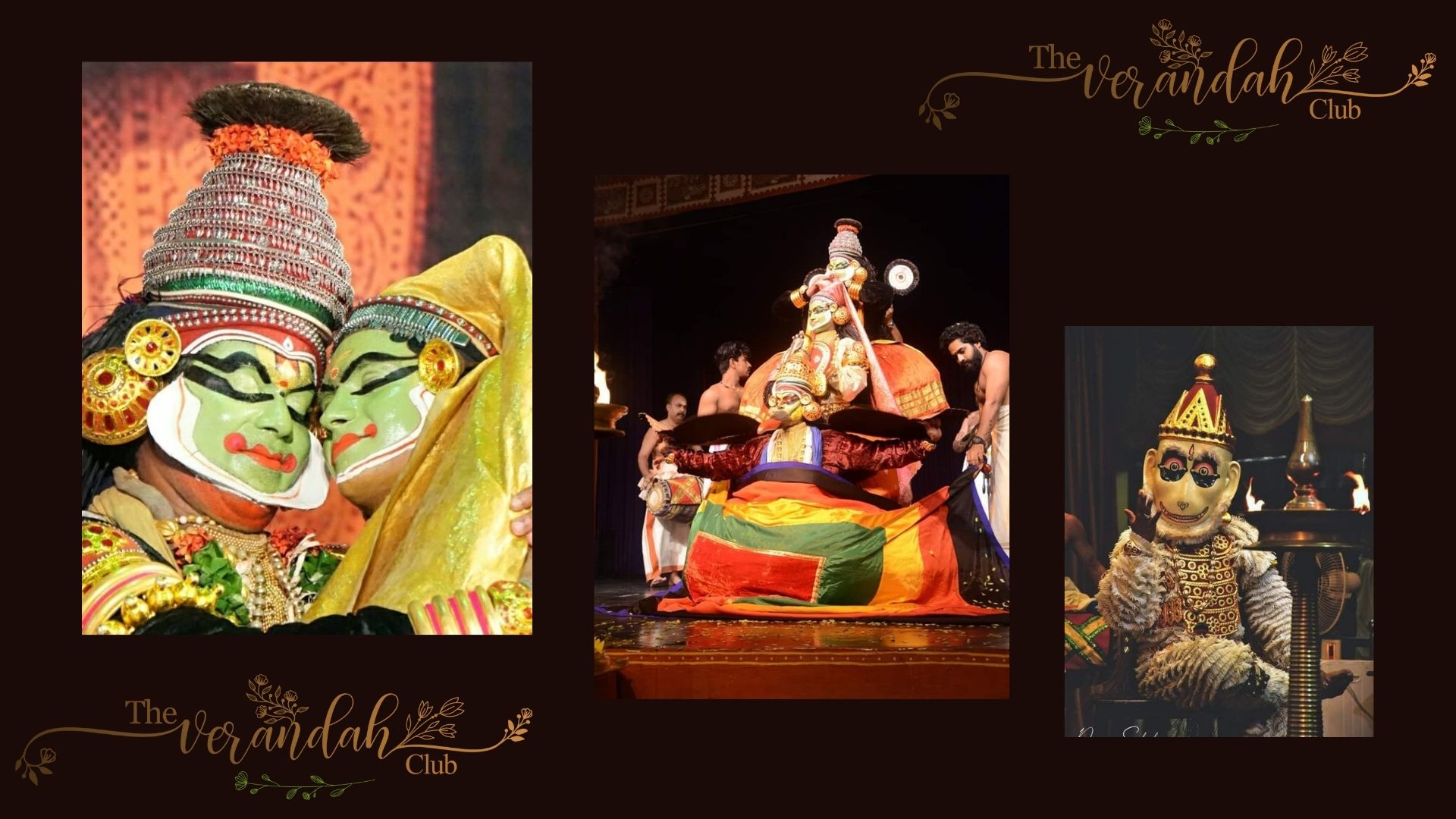
The art form transited from Zamorin palace to Guruvayur temple and now it is performed outside India too. The art itself is changed drastically in its usage of costume, music, dance sequence and performance to suit the circumstances, eventually. Krishnanattam is an outcome of Bhakthi and it is emphasized more than of artistic or popular appeal.
NEXT ARTICLE